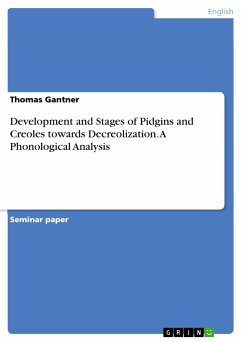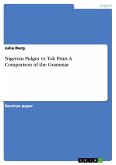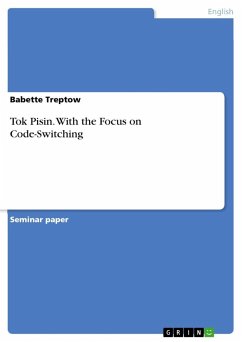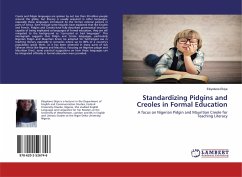Seminar paper from the year 2011 in the subject English Language and Literature Studies - Linguistics, grade: 2,3, University of Rostock (Institut für Anglistik und Amerikanistik), course: Enriching English, language: English, abstract: First, I will briefly portray the emergence of pidgin and creole languages and their development towards the post-creole continuum. I will examine the different types of pidgin-creole developments and the phenomenon of decreolizing - the approximation of the creole towards the lexifier by using the example of the Hawaiian Creole that I will also portray out of a socio-historical point of view. That creole is officially still called 'Hawai'i Pidgin' by its speakers, but I will avoid using that term in my paper. Therefore, the term Hawai'i Creole English, short HCE, is more appropriate. Furthermore, I will deal with HCE's phonology, especially with its difference to Standard English, in detail - due to the question whether HCE is decreolizing or not. As Norval S. H. Smith states, creole phonology is a "neglected field" and "younger languages" have the tendency to be not as much irregular as "elder language" tend to be.








